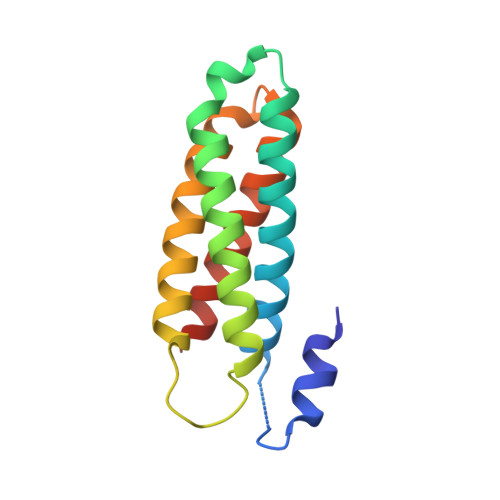Visualizing Biological Copper Storage: The Importance of Thiolate-Coordinated Tetranuclear Clusters.
Basle, A., Platsaki, S., Dennison, C.(2017) Angew Chem Int Ed Engl 56: 8697-8700
- PubMed: 28504850
- DOI: https://doi.org/10.1002/anie.201703107
- Primary Citation of Related Structures:
5NQM, 5NQN, 5NQO - PubMed Abstract:
Bacteria possess cytosolic proteins (Csp3s) capable of binding large quantities of copper and preventing toxicity. Crystal structures of a Csp3 plus increasing amounts of Cu I provide atomic-level information about how a storage protein loads with metal ions. Many more sites are occupied than Cu I equiv added, with binding by twelve central sites dominating. These can form [Cu 4 (S-Cys) 4 ] intermediates leading to [Cu 4 (S-Cys) 5 ] - , [Cu 4 (S-Cys) 6 ] 2- , and [Cu 4 (S-Cys) 5 (O-Asn)] - clusters. Construction of the five Cu I sites at the opening of the bundle lags behind the main core, and the two least accessible sites at the opposite end of the bundle are occupied last. Facile Cu I cluster formation, reminiscent of that for inorganic complexes with organothiolate ligands, is largely avoided in biology but is used by proteins that store copper in the cytosol of prokaryotes and eukaryotes, where this reactivity is also key to toxicity.
Organizational Affiliation:
Institute for Cell and Molecular Biosciences, Medical School, Newcastle University, Newcastle upon Tyne, NE2 4HH, UK.
















